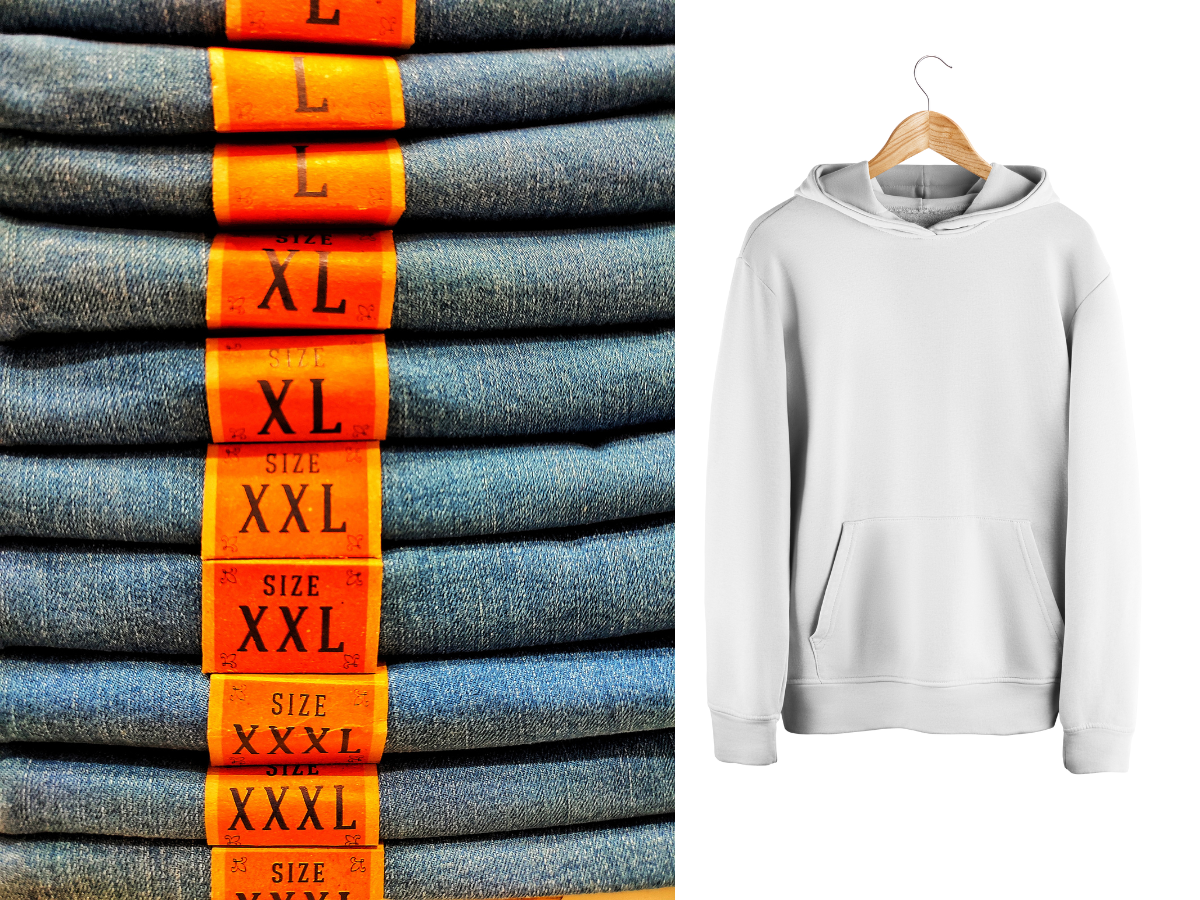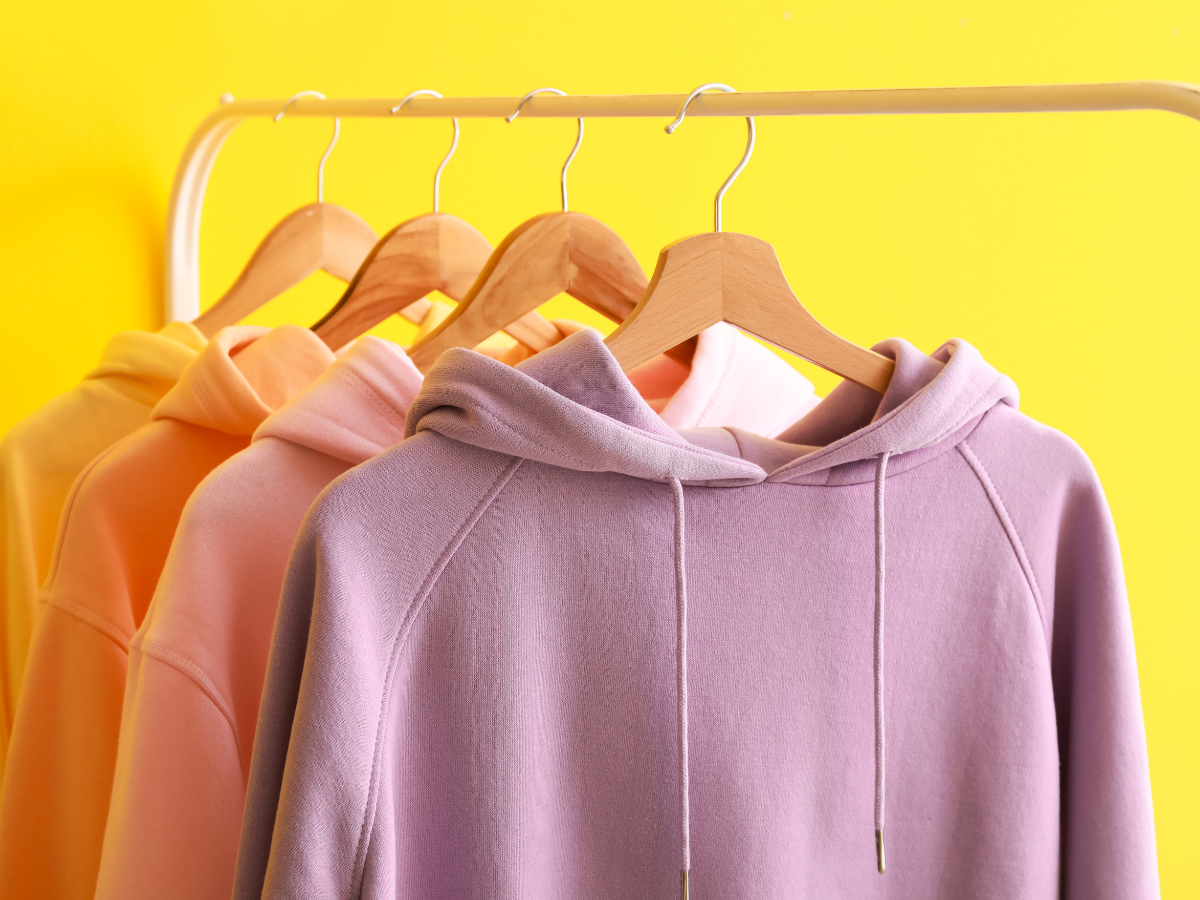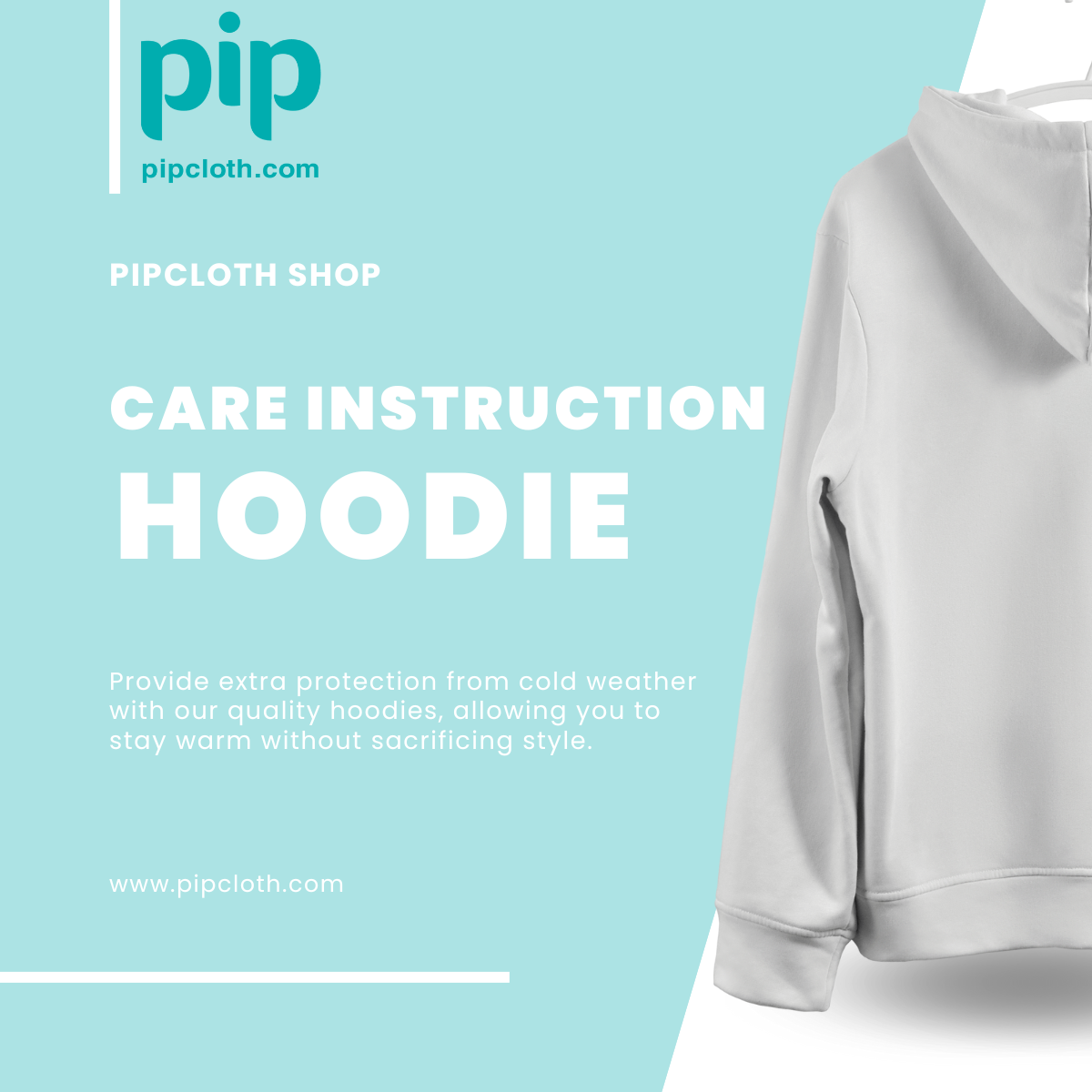How to Find the Perfect Fitting Hoodie
Understanding Hoodie Sizing Systems
Hoodie sizing can vary between brands and styles. Some key factors that impact sizing include the cut (e.g. junior fit vs regular), material (cotton vs synthetic blends), and intended fit (slim, regular or oversized). It’s important to check the specific size chart for the brand and style you are considering.
Measuring Yourself for the Perfect Fit
To find your ideal hoodie size, take accurate measurements of your chest, waist, hips and arms using a flexible tape measure. Compare these to the brand’s size chart, choosing the size that most closely matches your largest measurement. If between sizes, size up for a looser fit or down for a slimmer fit.
Considering Hoodie Styles and Fits
Hoodies come in various styles like pullover, zip-up, regular fit, slim fit, cropped, etc. The style impacts the overall fit, so consider both your measurements and desired fit when selecting a size. Pullover hoodies often fit slimmer than zip-ups. For an oversized look, size up.
Material Matters
The material of the hoodie also affects fit. 100% cotton hoodies may shrink in the wash. Polyester or polyester-blend hoodies are less likely to shrink. Check the care label and factor in potential shrinkage when selecting your size.
When In Doubt, Read Reviews
Online customer reviews are a great resource for gauging the fit of a specific hoodie. Many reviewers will mention if an item fits true to size, slim, large, etc. and even provide their measurements and size purchased for reference. When in doubt, check the reviews for fit guidance.
Introduction
Finding the perfect hoodie size is crucial for both comfort and style. With so many sizing systems and variations across brands, it can be challenging to navigate the world of hoodie sizing. In this article, we’ll explore the key aspects of hoodie sizing, from understanding basic measurements and common sizing systems to accommodating different body types and considering style preferences. By the end of this guide, you’ll be equipped with the knowledge and tools to find your ideal hoodie fit.
Understanding Hoodie Sizing Basics
Key Measurements for Determining Hoodie Size
To find the perfect hoodie size, you need to understand the key measurements that define fit. The three essential measurements are chest, length, and sleeve. The chest measurement (subject) determines (predicate) the overall width and roominess of the hoodie (object). Length (subject) affects (predicate) where the hoodie falls on your body (object), while sleeve measurement (subject) dictates (predicate) the arm coverage and cuff placement (object).
How to Properly Measure Your Body for a Hoodie
To accurately measure your body for a hoodie, follow these steps:
- Chest: Measure the circumference of your chest at the fullest point, typically just under your armpits.
- Length: Measure from the base of your neck to the desired length, usually around your hip or waist.
- Sleeve: Measure from the center of your neck, across your shoulder, and down to your wrist.
For the most precise measurements, use a flexible tape measure and stand in a relaxed posture. Avoid pulling the tape too tight or leaving it too loose.
Differences in Sizing Across Genders
Hoodie sizing can vary depending on the intended gender. Men’s hoodies (subject) often feature (predicate) a broader chest and longer length (object), while women’s hoodies (subject) tend to have (predicate) a more fitted silhouette and shorter length (object). Unisex hoodies aim to accommodate a wider range of body types, but may not provide the tailored fit of gender-specific sizes.
Common Hoodie Sizing Systems
US Sizing System
The US sizing system for hoodies typically uses letter designations such as S (small), M (medium), L (large), and XL (extra-large). However, the actual measurements corresponding to these sizes can vary between brands. For example, one brand’s medium (subject) may be equivalent to (predicate) another brand’s large (object).
European Sizing System
European hoodie sizing uses numeric sizes, such as 36, 38, 40, etc. These sizes (subject) are based on (predicate) the chest circumference in centimeters (object). To convert between European and US sizes, refer to brand-specific size charts or use online conversion tools.
Asian Sizing System
Asian hoodie sizing (subject) often runs (predicate) smaller than US and European sizing (object). When ordering from Asian brands, it’s essential to carefully review their size charts and consider sizing up to ensure a comfortable fit. Some brands may offer specific “Asian fit” or “Western fit” options to cater to different body types.

Understanding Sizing Systems: A Comprehensive Guide
Interpreting Hoodie Size Charts
How to Read and Compare Size Charts
When consulting a hoodie size chart, pay attention to the measurements listed for each size. Compare your own measurements to those on the chart to determine the best fit. Keep in mind that size charts (subject) may use (predicate) different measurement units (e.g., inches or centimeters) (object), so ensure you’re making accurate comparisons.
The Importance of Brand-Specific Size Charts
Due to variations in sizing between brands, it’s crucial to refer to brand-specific size charts whenever possible. A size medium in one brand (subject) may fit differently than (predicate) a size medium in another brand (object). By consulting the specific size chart for the brand you’re interested in, you can make a more informed decision about which size to choose.
Limitations of Size Charts
While size charts provide a helpful starting point, they may not account for factors such as body proportions, fabric stretch, or personal fit preferences. Customer reviews (subject) can offer (predicate) valuable insights into real-world fit experiences (object). Reading reviews from people with similar body types or measurements can help you gauge how a particular hoodie may fit on you.
Hoodie Fit Types and Preferences
Slim Fit Hoodies
Slim fit hoodies (subject) are designed to (predicate) hug the body closely (object), creating a tailored and streamlined silhouette. They often feature higher armholes, narrower sleeves, and a tapered waist. Slim fit hoodies are a great choice for those with a lean or athletic build who prefer a more fitted look.
Regular Fit Hoodies
Regular fit hoodies (subject) strike (predicate) a balance between a slim and relaxed fit (object). They offer a comfortable, easy-to-wear silhouette that suits a wide range of body types. Regular fit hoodies provide room for movement without being overly baggy or constricting.
Relaxed or Oversized Fit Hoodies
Relaxed or oversized fit hoodies (subject) are designed to (predicate) drape loosely on the body (object), creating a casual and laid-back look. They often feature dropped shoulders, wider sleeves, and a longer length. Oversized hoodies can be styled in various ways, such as pairing them with leggings or skinny jeans for a balanced outfit.
Choosing the Right Fit Based on Personal Style and Comfort
When selecting a hoodie fit, consider both your personal style preferences and comfort needs. If you prefer a more polished look, a slim or regular fit may be the best choice. For a relaxed, streetwear-inspired vibe, an oversized fit can be ideal. Consider the activities you’ll be wearing the hoodie for and choose a fit that allows for ease of movement and comfort.
Accommodating Different Body Types
Hoodies for Tall and Slim Body Types
If you have a tall and slim build, look for hoodies that offer extra length in the body and sleeves. Brands like American Tall and ASOS (subject) cater to (predicate) taller individuals with specialized sizing (object). Slim fit hoodies can help create a more proportional look, while regular fit styles provide a bit more room for layering.
Hoodies for Short and Petite Body Types
For those with a shorter or petite frame, seek out hoodies designed specifically for smaller proportions. Brands like Petite Studio and ASOS Petite (subject) offer (predicate) hoodies with reduced lengths and narrower shoulders (object). Cropped or shorter-length hoodies can also be a flattering choice, as they help to create the illusion of longer legs.
Hoodies for Plus-Size and Curvy Body Types
When shopping for hoodies as a plus-size or curvy individual, prioritize brands that offer inclusive sizing and cuts designed to accommodate diverse body shapes. Brands like Universal Standard and Girlfriend Collective (subject) are known for (predicate) their size-inclusive hoodie offerings (object). Look for hoodies with a relaxed or oversized fit, as they provide comfort and ease of movement.
The Rise of Inclusive Sizing in Hoodie Designs
In recent years, there has been a growing trend towards inclusive sizing in the fashion industry, including hoodie designs. More brands (subject) are recognizing (predicate) the importance of catering to a diverse range of body types and sizes (object). Inclusive sizing (subject) not only promotes (predicate) body positivity but also ensures that everyone can find a comfortable and well-fitting hoodie (object).
Considering Hoodie Style and Design
Pullover Hoodies vs. Zip-Up Hoodies
Pullover hoodies (subject) are characterized by (predicate) a solid front with no zipper (object), while zip-up hoodies (subject) feature (predicate) a full-length zipper closure (object). Pullover hoodies often have a more relaxed and casual fit, while zip-up hoodies provide the option to adjust the level of coverage and ventilation. Consider your personal preference and the level of versatility you need when choosing between the two styles.
Hoodie Sleeve Types
Hoodie sleeves can come in various styles, each affecting the fit and overall look:
- Raglan sleeves: Extend from the collar to the underarm in a diagonal seam, providing a more relaxed and comfortable fit.
- Set-in sleeves: Attached at the shoulder with a perpendicular seam, offering a more structured and traditional look.
- Drop shoulder sleeves: Feature a seam that falls below the natural shoulder line, creating a relaxed and oversized appearance.
Consider the sleeve type when evaluating the fit and style of a hoodie, as it can impact the overall silhouette and range of motion.
Hoodie Hood Types
The hood is a defining feature of a hoodie, and different hood types can affect both style and functionality:
- Drawstring hoods: Allow for adjustability and a customizable fit around the face.
- Fitted hoods: Designed to lay flat against the head for a sleek and streamlined look.
- Oversized hoods: Provide extra coverage and a relaxed, casual appearance.
Think about the level of coverage and adjustability you prefer when selecting a hoodie with a particular hood type.
Hoodie Materials and Stretch
Common Hoodie Materials
Hoodies can be made from various materials, each with its own properties and benefits:
- Cotton hoodies: Soft, breathable, and comfortable, ideal for everyday wear.
- Polyester hoodies: Durable, moisture-wicking, and quick-drying, perfect for athletic or outdoor activities.
- Blended fabric hoodies: Combine the advantages of multiple materials, such as cotton and polyester, for a balance of comfort and performance.
Consider the intended use and desired properties when choosing a hoodie material.

Impact of Fabric Weight and Thickness on Sizing
The weight and thickness of the hoodie fabric (subject) can influence (predicate) the overall fit and drape (object). Heavier fabrics, such as a thick cotton fleece, may have a more structured and substantial feel, while lighter fabrics, like a thin cotton blend, may drape more closely to the body. Keep fabric weight in mind when selecting a size, as a heavier fabric may require sizing up for a comfortable fit.
How Fabric Stretch Affects Hoodie Fit and Sizing
Some hoodies incorporate stretchy materials, such as spandex or elastane, to provide a more flexible and comfortable fit. The degree of stretch (subject) can impact (predicate) how a hoodie fits and moves with your body (object). When considering a hoodie with stretch, think about how the fabric will adapt to your movements and whether you prefer a more fitted or relaxed look.
Tips for Online Hoodie Shopping
Checking Customer Reviews for Sizing Feedback
When shopping for hoodies online, customer reviews can be a valuable resource for gauging fit and sizing accuracy. Look for reviews from people with similar body types or measurements to get an idea of how the hoodie may fit you. Pay attention to feedback on sizing consistency, material quality, and overall comfort.

Utilizing Size Comparison Tools and Apps
Some online retailers and third-party apps offer size comparison tools that can help you find the best hoodie size based on your measurements and preferences. These tools (subject) typically ask (predicate) for your height, weight, and body measurements, then provide a recommended size (object) based on the brand’s sizing information. While not foolproof, these tools can be a helpful starting point when shopping online.
Understanding Return and Exchange Policies
Before making an online hoodie purchase, familiarize yourself with the retailer’s return and exchange policy. Look for information on the return window, any restocking fees, and the process for initiating a return or exchange. A flexible and customer-friendly return policy (subject) can provide (predicate) peace of mind and make it easier to find the perfect hoodie fit (object), even if it takes a few tries.
Hoodie Sizing for Layering
Choosing the Right Hoodie Size for Layering
When selecting a hoodie size for layering, consider the fit and thickness of the garments you’ll be wearing underneath. If you plan to wear the hoodie over a bulky sweater or multiple layers, you may need to size up to accommodate the extra volume. A hoodie that fits well as a standalone piece (subject) may feel (predicate) too tight or restrictive when worn over layers (object).
Accounting for the Thickness of Layers
The thickness of your layers (subject) can significantly impact (predicate) the overall fit and comfort of your hoodie (object). When layering with thicker garments, like a chunky knit sweater, you may need to size up in your hoodie to prevent a constricting or uncomfortable fit. Consider the fabric weight and thickness of both your hoodie and the layers beneath when making sizing decisions.
Tips for Layering Hoodies with Outerwear
When layering hoodies with outerwear, such as jackets or coats, consider the fit and style of both pieces. A slim-fit hoodie (subject) may work well under (predicate) a tailored jacket (object), while an oversized hoodie (subject) may pair better with (predicate) a relaxed-fit coat (object). Ensure that the hoodie sleeves fit comfortably under the outerwear and that the overall silhouette remains balanced and proportional.
Brands with Consistent Hoodie Sizing
Overview of Brands Known for Reliable Sizing
Some brands have developed a reputation for consistent and reliable hoodie sizing. These brands (subject) typically invest in (predicate) rigorous sizing standards and quality control measures (object) to ensure that their hoodies fit true to size across different styles and releases. Examples of such brands include Carhartt, Champion, and Reigning Champ.
Benefits of Brand Loyalty for Consistent Sizing
Once you find a brand that offers hoodies that consistently fit you well, sticking with that brand can simplify your sizing choices. Brand loyalty (subject) allows you to (predicate) confidently purchase hoodies without the need to constantly refer to size charts or worry about fit discrepancies (object). This can be especially helpful when building a hoodie collection or replacing old favorites.
How to Find Brands That Align with Your Sizing Needs
To find brands that align with your sizing needs, start by researching brands that cater to your body type or fit preferences. Look for brands that offer detailed size charts, inclusive sizing, or specialized fits. Read customer reviews and seek out feedback from people with similar body types to gauge the brand’s sizing consistency and accuracy.
Navigating the world of hoodie sizing systems can be challenging, but by understanding the key factors that influence fit and sizing, you can find the perfect hoodie for your needs. Remember to consider your body measurements, fit preferences, and the intended use of the hoodie when making sizing decisions. Don’t be afraid to experiment with different brands, styles, and fits until you find the one that makes you feel comfortable, confident, and stylish.
By following the tips and information outlined in this guide, you’ll be well-equipped to decipher hoodie sizing systems and find the perfect fit every time. Whether you prefer a slim, regular, or oversized fit, there’s a hoodie out there for everyone. Happy hoodie hunting!
FAQ Section:
Q1: What is the importance of considering body proportions when selecting a hoodie size?
Body proportions, such as the ratio between your torso length and arm length, can significantly impact how a hoodie fits. For example, if you have a longer torso and shorter arms, a hoodie that fits well in the body may have sleeves that are too long. Conversely, if you have a shorter torso and longer arms, a hoodie that fits in the sleeves may be too short in the body. Consider your unique body proportions when choosing a hoodie size, and look for brands that offer options like tall or petite sizes to accommodate different body types.
Q2: How can you determine your hoodie size if you fall between two sizes?
If your measurements fall between two sizes, consider your preferred fit and the fabric’s stretchiness. If you prefer a more fitted look or the fabric has minimal stretch, opt for the smaller size. If you prefer a looser, more relaxed fit or the fabric is very stretchy, choose the larger size. It’s also helpful to read customer reviews to see if the hoodie runs true to size or if it tends to run small or large.
Q3: What are some common issues to look out for when trying on a hoodie?
When trying on a hoodie, pay attention to the following areas:
- Shoulder seams: They should sit at the edge of your shoulders, not below or above.
- Sleeve length: The cuffs should fall at your wrists or slightly below, depending on your preference.
- Body length: The hoodie should fall at your desired length, whether that’s at your hips, waist, or below.
- Tightness or pulling: The hoodie shouldn’t feel too tight or pull across any area, such as the chest or shoulders.
- Mobility: Move your arms and torso to ensure the hoodie allows for a comfortable range of motion.
Q4: How do you care for hoodies made from different materials to maintain their fit and shape?
To maintain the fit and shape of your hoodies, follow the care instructions on the garment tag. Generally, cotton hoodies can be machine washed in cold water and tumble-dried on low heat. Polyester and blended hoodies can also be machine washed, but use a gentle cycle and avoid high heat to prevent shrinkage or damage to the fabric. Wool hoodies should be hand washed or dry cleaned to maintain their shape and prevent felting. Lay hoodies flat to dry or hang them on a padded hanger to avoid stretching.
Q5: What are some tips for layering hoodies under jackets or coats?
When layering hoodies under jackets or coats, consider the following tips:
- Choose a hoodie with a slim or regular fit to avoid bulkiness under your outerwear.
- Opt for a hoodie made from a thinner material, like lightweight cotton or a cotton-polyester blend, to reduce bulk.
- Consider the neckline of your hoodie and how it will lay under your jacket or coat. A crew neck hoodie may work better under a collared coat, while a v-neck hoodie may be more suitable under a bomber jacket.
- Make sure the hoodie sleeves fit comfortably under your outerwear sleeves without bunching or restricting movement.
Q6: Can you shrink a hoodie that’s too big?
While it’s possible to shrink a hoodie that’s too big, it’s not always recommended, as it can affect the garment’s proportions and overall fit. If you want to attempt shrinking a hoodie, follow these steps:
- Check the care label to ensure the hoodie is made from a material that can be safely shrunk, like cotton.
- Wash the hoodie in hot water, as heat is necessary for shrinkage.
- Dry the hoodie on high heat in the dryer.
- Try on the hoodie to see if it has shrunk to your desired size. If not, repeat the process.
Keep in mind that shrinking a hoodie may result in uneven shrinkage or a change in the fabric’s texture.
Q7: What are some signs that a hoodie is too small or too large?
Signs that a hoodie is too small include:
- Tightness or pulling across the chest, shoulders, or back
- Sleeves that are too short and ride up your arms
- A body length that is too short and exposes your midriff
- Difficulty moving your arms or feeling restricted in your range of motion
Signs that a hoodie is too large include:
- Shoulder seams that fall below your shoulders
- Sleeves that are too long and cover your hands
- A body length that is too long and falls past your desired length
- Excess fabric that billows or sags around your torso
Q8: How can you style an oversized hoodie for a more put-together look?
To style an oversized hoodie for a more put-together look, try the following:
- Pair the hoodie with slim-fitting bottoms, like skinny jeans, leggings, or tailored pants, to balance the proportions.
- Layer the hoodie under a structured jacket, like a denim jacket or a blazer, to add definition to your silhouette.
- Tuck the front of the hoodie into your bottoms to create a more polished and intentional look.
- Accessorize with statement pieces, like bold earrings or a chunky necklace, to elevate the overall outfit.
- Opt for a monochromatic color scheme, wearing the hoodie in the same color family as your bottoms, for a cohesive and streamlined appearance.
Q9: What are some factors to consider when choosing a hoodie for a specific activity, like working out or hiking?
When choosing a hoodie for a specific activity, consider the following factors:
- Material: Look for moisture-wicking, quick-drying, and breathable materials like polyester or nylon blends for activities that involve sweating.
- Fit: Choose a hoodie with a slim or regular fit that allows for ease of movement and layering.
- Features: Consider hoodies with activity-specific features, like thumbholes to keep sleeves in place, reflective details for visibility, or zippered pockets for secure storage.
- Weather-resistance: For outdoor activities, look for hoodies with water-resistant or wind-resistant properties to protect you from the elements.
- UPF protection: If you’ll be spending time in the sun, consider hoodies with built-in UPF (Ultraviolet Protection Factor) to shield your skin from harmful UV rays.
Q10: How can you incorporate hoodies into a professional or business casual wardrobe?
To incorporate hoodies into a professional or business casual wardrobe, follow these guidelines:
- Choose hoodies in neutral colors, like black, navy, or gray, to maintain a professional appearance.
- Opt for hoodies with a slim or regular fit, rather than oversized or baggy styles, to keep the look streamlined.
- Layer the hoodie under a blazer or sport coat for a polished, yet comfortable, outfit.
- Pair the hoodie with dress pants or khakis, rather than casual bottoms like jeans or sweatpants.
- Select hoodies made from high-quality materials, like cashmere or merino wool, for a more elevated and luxurious feel.
- Keep accessories minimal and professional, like a leather watch or simple stud earrings, to maintain a business-appropriate look.
Remember, while hoodies can be incorporated into a professional wardrobe, it’s essential to consider your workplace’s dress code and culture to ensure the look is appropriate and well-received.





